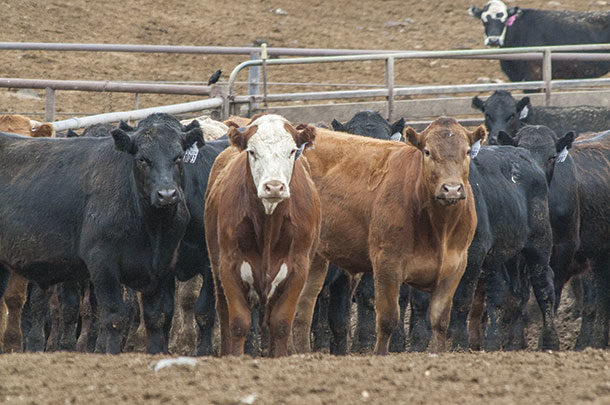This disease complex accounts for approximately 75% of feedlot illnesses and 50% of feedlot deaths. While the medical costs associated with these numbers are significant, the economic impact of BRD due to poor performance of cattle can be devastating.
Recent trends show BRD will continue to be a financial challenge to producers and feedlot managers if the beef industry does not start shifting to more proactive management techniques.
Current trends
During weaning and shipping, calves undergo stress, and BRD becomes a huge threat. This is why feedlot managers have continued to look for more effective – and often more expensive – ways to treat this disease complex as soon as new calves step foot onto their operations.
I see cattle producers continuing to spend significant dollars on antibiotics to manage BRD. The main issue with the use of antibiotics is: Feedlot mortality has also continued to increase. Despite producers’ best efforts to treat BRD, mortality in feedlots still trends upward (see Figure 1).

If we’re continuing to spend money on antibiotics to protect our cattle from BRD, why are we still seeing significant morbidity and mortality rates due to respiratory diseases in our feedlots?
The trends show current management of BRD is simply not working. And at the same time, consumer and regulatory pressure to reduce the amount of antimicrobial use in food animals is on the rise. As we move forward, we will have to continue justifying the use of antibiotics on cattle operations.
This is where the industry is going to need to make a decision. We can continue trying to manage the effects of BRD only through costly antibiotics, or we can choose to start matching the disease threats with effective preventive measures as part of the solution.
Matching the threat of BRD
The following are ways every beef operation can take preventive and appropriate action in reversing the current BRD trends:
1. Control stressors
In the cattle industry, there are a number of built-in stressors such as weaning, shipping, commingling and dehorning. But even seemingly minor environmental events, like changes in temperature and dust as well as inadequate ventilation and moisture, can be a factor. While there’s no way to completely prevent stress, producers can always take an extra step to minimize it.
Management of new cattle greatly impacts long-term performance. To decrease stress, it is recommended calves be placed on a properly formulated nutrition program which includes trace minerals. Try to avoid overcrowding, as it causes stress and promotes the spread of disease. Last, handling cattle should be done in a calm manner.
 2. Source preconditioned cattle
2. Source preconditioned cattle
Unfortunately for the stocker business, there are a lot of cow-calf operations that may not use a respiratory vaccine on calves. In fact, it’s estimated only one in four cattle has been vaccinated for the more common bacterial agents associated with respiratory disease.
Shifting our focus toward more proactive prevention techniques will help our industry combat BRD and save money on increasing treatment costs.
Consider implementing a preconditioning program that includes a high-quality modified-live vaccine to give calves strong immunity in order to protect them from BRD and sourcing cattle from an operation that does so as well.
3. Match treatment label claims to key pathogens
Even with the best management, some animals will still get sick. When this happens, using a quick, safe and effective treatment option will yield the best results. BRD often involves more than one pathogen and may include Mannheimia haemolytica, Pasteurella multocida, Histophilus somni and Mycoplasma bovis.
If a pathogen is not susceptible to the active ingredient, the antibiotic is not going to work. Reading through the details on the product label and consulting your veterinarian is highly recommended before providing treatment.
Consider using a proven antimicrobial with an active ingredient like gamithromycin; it will be rapidly absorbed and extensively distributed in the lung tissue to provide effective treatment and control of BRD in cattle.
4. Administer the proper dosage, and wait
When administering antibiotics, it’s very important to provide an accurate dose. While overdosing is a waste of money, underdosing can deliver a poor result.
It’s also important to give the antimicrobial time to do its job. Work with your veterinarian to establish a post-treatment interval during which clinical signs are monitored closely before determining if re-treating the animal is necessary.
There is not a quick fix for reversing the trends of BRD. But incorporating good management practices and a sound vaccination program to keep cattle performing their best is a great start. Feedlot managers and producers should consult their veterinarians to develop effective BRD prevention and treatment plans. ![]()
PHOTO: More proactive steps are needed to manage BRD, tackle morbidity and reduce death loss in feedlots. Staff photo.
References omitted but are available upon request. Click here to email an editor.

-
John M. Davidson
- Sr. Associate Director, Beef Cattle Professional Services
- Boehringer Ingelheim Animal Health
- Email John M. Davidson











